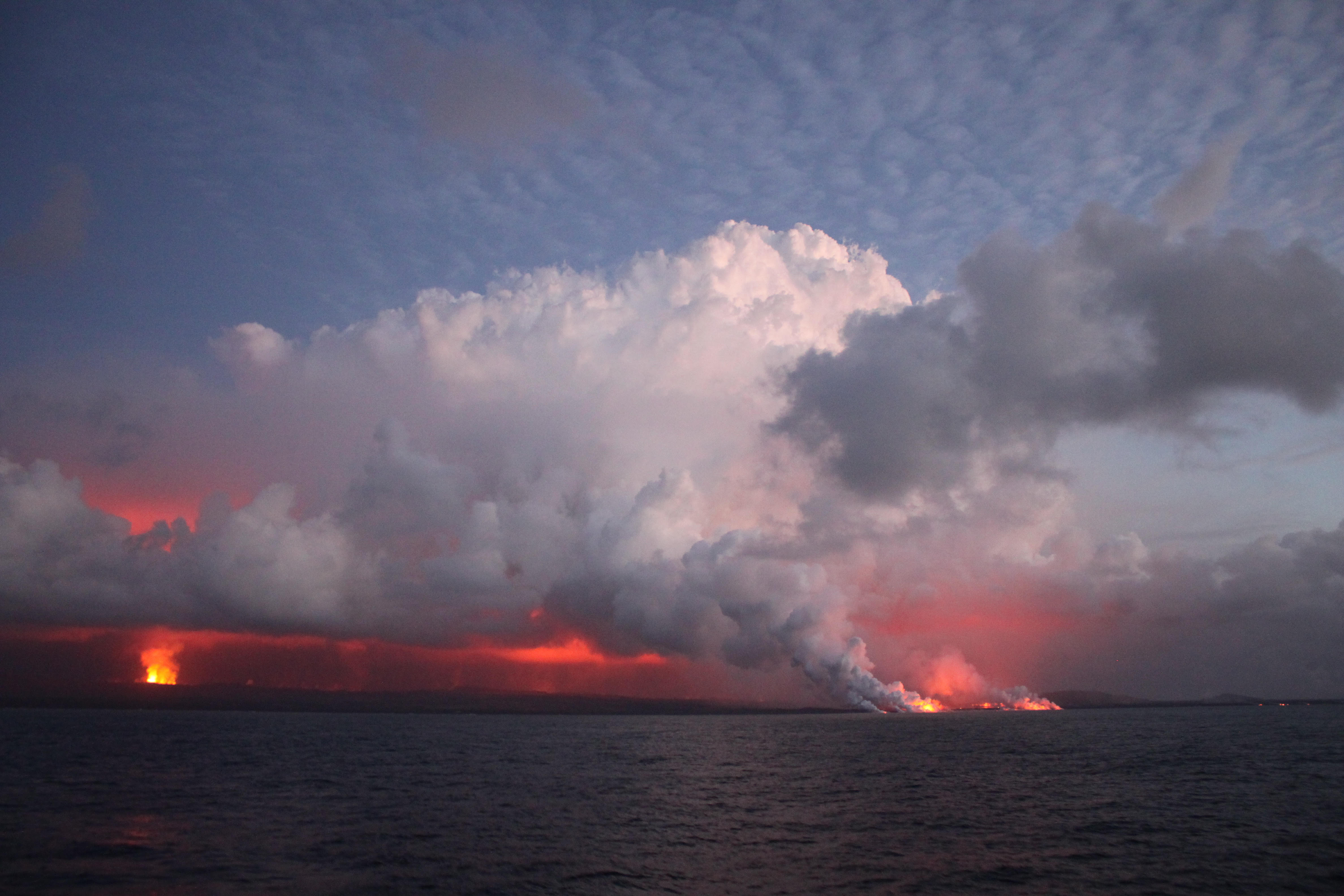The Kīlauea volcano in Hawai’i oozed molten rock for months during 2018, and eventually became the most destructive eruption in the United States since Mount St. Helens exploded in 1980.
But as lava flows caused evacuations and property loss on land, they also triggered a burst of new life in the seas, according to a study published on Thursday in Science.
Videos by VICE
A super bloom of algae in the North Pacific Ocean near Kīlauea became so large during the eruption that it was visible from space, leading scientists to question whether the microscopic organisms were fueled by voluminous lava flows entering the ocean. After all, basalt and other volcanic materials are known to significantly enrich land ecosystems over the long term, even though they can be initially catastrophic to life.
Scientists led by Samuel Wilson, an oceanographer at the University of Hawai’i, organized a boat expedition to the large bloom near Kīlauea in mid-July 2018, to determine if eruptions might also transform marine environments into fertile grounds for new life.
The researchers sampled the bloom and observed it with an underwater vehicle. The results revealed that the water contained unusually high levels of nitrates, a nitrogen-based compound that acts as a fertilizer on land and in the ocean.

“Marine ecosystem responses to such substantial additions of nitrate are rarely observed or sampled in real time,” the authors point out in the study.
While the nitrates were clearly the major catalyst for the bloom, they were unlikely to have directly originated from the Kīlauea eruption, because lava flows are low in nitrogen. Still, the team suspected that the eruption must have fed the algae somehow, given that the bloom rapidly disintegrated once the lava flows slowed down in early August.
Wilson and his colleagues propose that lava descending into deep ocean waters caused an upwelling of nutrients, including nitrates, that enabled the bloom to flourish in what the team called “the nitrogen-starved surface ocean.”
“It is possible that this mechanism has led to similar ocean fertilization events in the past, associated with the formation of the Hawaiian Islands and other major volcanic eruptions,” the authors said.
The study could have implications for modeling climate change projections, as volcanic eruptions and algae blooms have opposite influences on atmospheric carbon levels. While volcanoes spew greenhouse gases into the atmosphere, marine microbes sequester about 10 gigatonnes of carbon from the air into the ocean each year.
The fact that the greenhouse emissions of some volcanic eruptions may be partially countered by the stimulation of algae blooms could help inform climate outcomes in the future.




